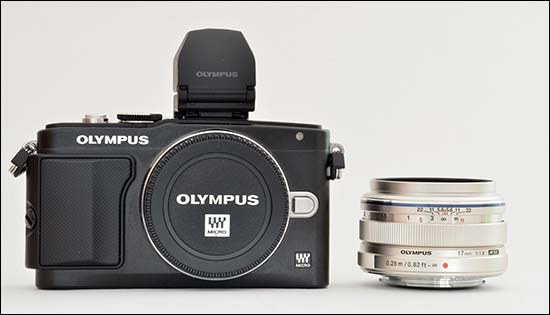Olympus M.ZUIKO Digital 17mm f/1.8 Review

Introduction
The Olympus M.Zuiko Digital ED 17mm f/1.8 is a high-grade, all-metal, fast moderate wide-angle lens for the Micro Four Thirds system. Courtesy of built-in depth of field and distance indicators, the lens is ideal for zone focusing - but it also offers quiet and fast Movie & Stills Compatible auto focus for those that prefer to use AF over focusing manually. Boasting a similar angle of view as a 34mm lens in a 35mm system, the Olympus M.Zuiko Digital ED 17mm f/1.8 features the special Olympus ZERO (Zuiko Extra-low Reflection Optical) coating to minimise flare and ghosting. The Olympus M.Zuiko Digital ED 17mm f/1.8 lens is available now, at a price of £449.99 / $499.99.
Ease of Use
As seen in the photo above, the Olympus M.Zuiko Digital ED 17mm f/1.8 is a truly small lens that is almost dwarfed by the Olympus E-PL5 body we used for this test, even though it is not exactly a huge camera, either. In light of that, you might be surprised to learn that the lens has a rather complex optical formula with a total of 9 elements including three aspherical surfaces and one high-refractive-index element. Being a metal lens means it's somewhat heavier than you'd expect based on its size alone, but it's still extremely lightweight in comparison to most SLR lenses.
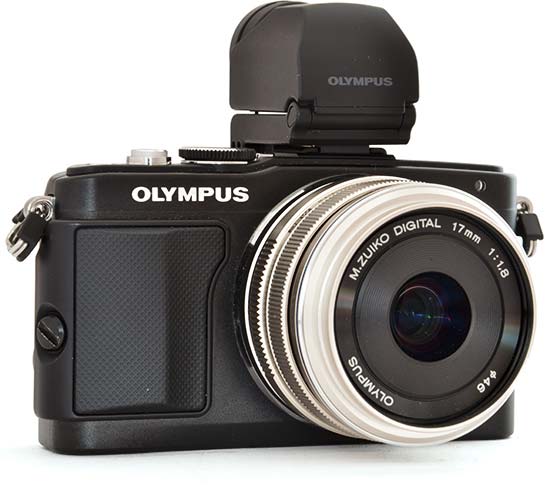
Once attached to the camera, the Olympus M.Zuiko Digital ED 17mm f/1.8 looks perfectly proportionate and balances very well.
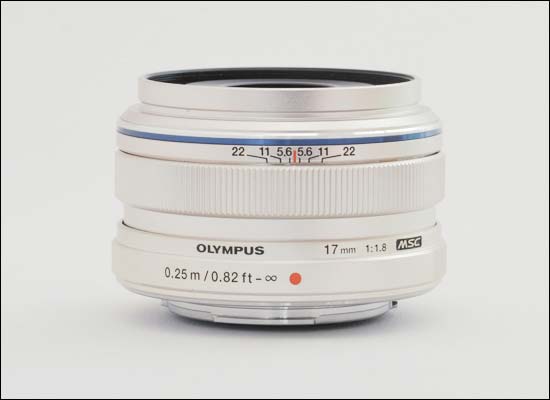
The Olympus 17mm f/1.8 is an all-metal lens that is reminiscent of the highest-quality rangefinder lenses of yore, both in terms of its tactile qualities and its overall aesthetics – although at first sight you may wonder if the distance scale has gone missing.
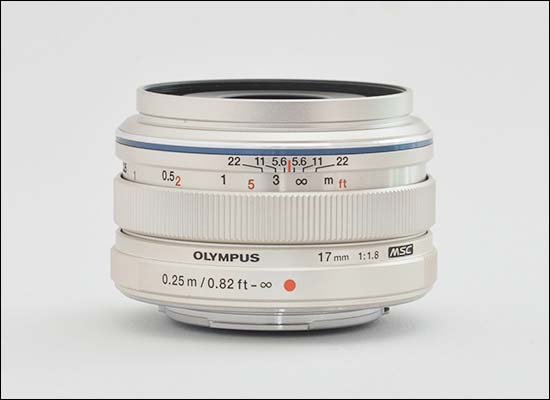
Well, it hasn't. A closer look reveals that you can pull the focus ring back toward the mount, a move that exposes a nicely engraved distance scale that – together with a useful set of DoF markings – allows you to use the time-honoured technique of zone focusing, which is very good news for all the street photographers out there. (Olympus itself calls this solution a “Snapshot Focus mechanism”.) The lens does not offer optical image stabilisation – this is no big deal if you plan on using it with an Olympus camera with body-integral IS, but still worth noting given that Panasonic's Micro Four Thirds cameras do not carry this feature.
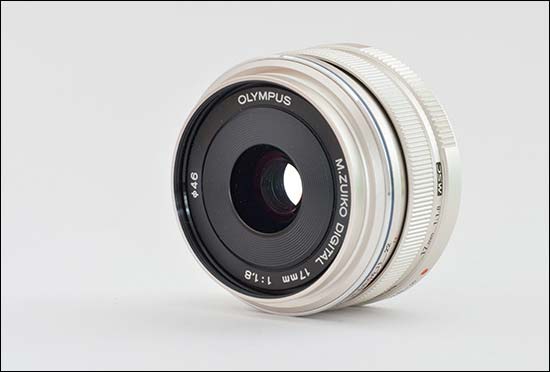 Front of lens, isometric view
Front of lens, isometric view
The lens takes small 46mm filters and also allows you to mount the circular LH-48B hood. Alas, this is an optional accessory rather than a standard one – and a pricey one at that ($70). This metal lens hood was not provided to us for this review. The Olympus M.Zuiko Digital ED 17mm f/1.8 comes with a tiny plastic lens cap as standard but a metal cap is also available as an optional extra.
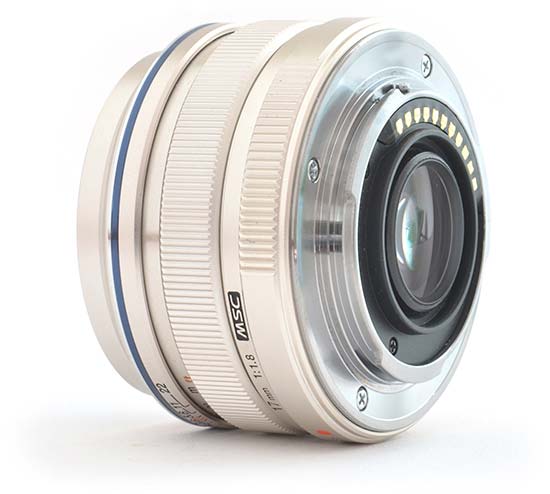 Rear of lens, isometric view
Rear of lens, isometric view
Being an all-metal lens, the M.Zuiko Digital 17mm f/1.8 naturally features a metal bayonet mount that allows it to be mounted to any Micro Four Thirds camera (but no “regular” Four Thirds DSLR, of course).
Focusing
On the Olympus E-PL5 body we used for this test, the lens focused quickly and quietly. AF speeds were really fast, with the lens locking on to the subject almost instantly in most cases. Focusing is fully internal, meaning the length of the lens barrel does not change and the filter thread does not rotate on focus. This is very good news to those who plan on using polarisers or graduated neutral density filters on this lens with any regularity.
With the focus ring in its normal position, manual focusing works just like it does on any other Micro Four Thirds lens. In MF, S-AF+MF or C-AF+MF mode – as set on the camera – you can simply grab the focus ring and rotate it to focus on your subject. Focusing is done “by wire” as the ring is not mechanically coupled to the moving lens elements. In this position, the focus ring has no stops, hard or soft, at either end of the focus range – which is again typical of an MFT lens.
Pulling the focus ring back sends the lens to manual focus mode, irrespective of what focusing method you have set on the camera. In this position, the focus ring stops when you reach infinity or the close-focus point, much like on a classic manual-focus lens. Although you are still focusing by wire – which becomes especially obvious if you magnify into the live view feed while focusing –, the experience is closer to using a purely manual lens. The most tangible benefit of Olympus' “Snapshot Focus mechanism”, however, is that it allows you to use zone focusing techniques, courtesy of the engraved distance scale and depth-of-field marks.
Distortion
Olympus and Panasonic bodies – as well as most raw converters – correct geometric distortion automatically. Even the live image seen on the LCD screen or through the electronic viewfinder – if your camera has one – is auto-corrected for distortion. In the case of the M.Zuiko Digital ED 17mm f/1.8 lens, the automatic correction is fairly successful, although you can still see some “residual” barrel distortion in the pictures.

Some raw converters – such as RawTherapee – can show you the uncorrected image which, in the case of this particular lens, tends to have considerably more barrel distortion to it.

That's a bit disappointing for a premium fixed-focal lens, although as seen above the automatic correction works reasonably well.
Chromatic Aberrations
Lateral chromatic aberrations, typically seen as blue or purple fringes along contrasty edges, are essentially a non-issue with this lens. As demonstrated by the examples below, you can find a few occurrences of lateral CAs if you are actively looking for them but they are a lot less prevalent than you would expect from a fast wide-angle lens. Longitudinal CAs – caused by sperochromatism – are a bit more common, particularly in photographs captured at maximum aperture, but are not too intrusive, either.
 |
 |
Light Fall-off
With the lens wide open, you can see some light fall-off in the image corners. This quickly disappears upon stopping down – at f/2.8 and beyond, it is essentially negligible.

Macro
Offering only 0.08x magnification, the Olympus M.Zuiko Digital ED 17mm f/1.8 is anything but a macro lens. The close focusing distance is 25cm from the sensor plane. The following example demonstrates how close you can get to the subject – in this case, a Compact Flash memory card.
 Close-up performance
Close-up performance
Bokeh
Bokeh is a word used for the out-of-focus areas of a photograph, and is usually described in qualitative terms, such as smooth / creamy / harsh etc. One of the reasons to buy a fast lens is to be able to isolate the subject from the background, and the Olympus M.Zuiko Digital ED 17mm f/1.8 does not disappoint here – although you must keep in mind that this is still a wide-angle lens with a short focal length, so the actual size of the aperture is still only 9.4mm (wide open), meaning that if your subject is far away from the camera and the background isn't terribly far behind the subject, the separation effect will be subtle. Having said that, if your subject is close to the lens, you can achieve a magnificently shallow depth of field. In these cases, the appearance of the out-of-focus areas is usually quite pleasant, owing to the use of an iris diaphragm with seven rounded blades. In other cases (greater camera-to-subject distance, busy background), the bokeh can be somewhat nervous-looking.
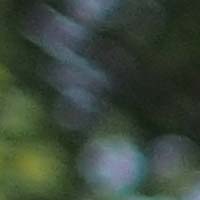 |
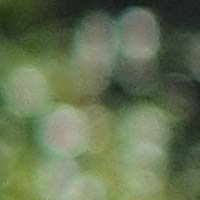 |
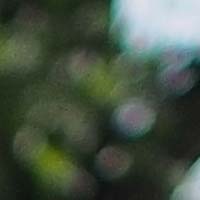 |
 |
Sharpness
In order to show you how sharp this lens is, we are providing 100% crops on the following page.

